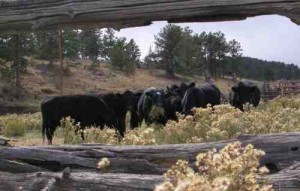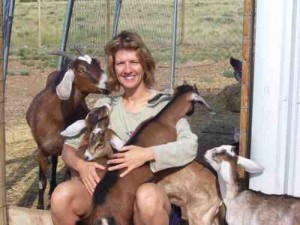Review by Ed Quillen
History – January 2008 – Colorado Central Magazine
Drifting West – The Calamities of James White and Charles Baker
by Virginia McConnell Simmons
Published in 2007 by University Press of Colorado
ISBN 0870818740
COLORADO HISTORY BUFFS know Charles Baker as the namesake of Baker’s Park, the bowl in the San Juan Mountains that holds the town of Silverton, where Baker led an 1860 prospecting party that was driven out by the Utes and hard weather.
Colorado River history buffs know James White as the man who in 1867 claimed to be the first person to float the Grand Canyon, an epic venture to be sure — except that few except White are sure he actually did it, and to this day, most historians credit John Wesley Powell with the first river trip down the Grand Canyon.
After his first venture to the San Juans, Baker left Colorado and returned to his native South, where he may have fought for the Confederacy. After the war, he headed west again. In Kansas in 1866, he met up with White, George Strole, and Joe Goodfellow. The next spring, “the four put their heads together in hopes of improving their lot, and … formed a small band to search for gold in the Rocky Mountains.”
They needed transportation, so the trip west started with a raid on an Indian camp, whence they took 19 or 20 horses. Heading west ahead of the pursuing Indians, they passed the ruins of Bent’s Old Fort before turning north at Pueblo to reach Colorado City (today’s “Old Colorado City” on the west side of Colorado Springs). There they paused for a week or so to stock up, then headed west up Ute Pass to cross South Park and then Trout Creek Pass to the tiny settlement of Brown’s Creek, known today as Centerville.
Their adventures at Centerville were detailed in “Shootout at Brown’s Creek,” an article Simmons wrote for this magazine, published in the September, 2007, edition. Put briefly, the four shared a small cabin as they prepared to go prospecting in the San Juans in the summer of 1867, and they must have got on each other’s nerves.
As White recalled it years later:
“… I took 25 pounds of flour off Goodfellow’s horse, and baked most of it into bread. The flour not used I put back on the horse, and was going to put the bread on the horse also, when Goodfellow said the bread ought to be put on the mule. I said it ought to go on the horse because I had taken the flour off the horse.
“We quarreled over it. We drew our revolvers and passed five shots between us. I hit Goodfellow twice, shot him once in the leg and once in the arm.”
They left Goodfellow to recover at Brown’s Creek. The remaining trio — Baker, White, and Strole — headed southwest for some prospecting.
Along the way, they saw Mesa Verde, some years before its “official” discovery, and reached the San Juan somewhere around Mexican Hat. They were in a dead-end canyon when Baker was shot by an Indian — or so White said, though many later suspected him of killing Baker.
The two survivors built a raft of cottonwood logs which soon fell apart. They built a bigger one and floated the Colorado, where Strole was swept from the raft and drowned. Or, alternately, White shot both Strole and Baker in cold blood, then floated away.
The next time anyone saw White was on Sept. 7, 1867, when an emaciated, sunburnt man on a primitive log raft drifted into Callville, Nevada, below the mouth of the Grand Canyon.
White said he had floated down the Colorado, through the Grand Canyon, and became something of a celebrity before he eventually settled down to a quiet life as a drayman in Trinidad. But his story was questioned, especially by fans of John Wesley Powell’s 1869 and 1871 expeditions.
Simmons provides a detailed analysis of all known evidence — historical, geographic, cartographic — and invites the reader to come to his own conclusion as to whether White actually floated the Grand Canyon, or somehow bypassed it.
I pondered it for a while and decided I agreed with the fellow who thought White’s tale was preposterous, but not as preposterous as any of the alternate theories of where and how White might have traveled.
White’s route is an abiding controversy, and despite the copious research inside Drifting West, it will likely never be settled. But it’s fun to speculate, and that’s what made me enjoy this book.
It’s not always fast reading as Simmons puts these characters into a full context of their times and places, but it is an engaging tale of four men on the frontier, seeking their fortunes, and frequently finding misfortune instead.


